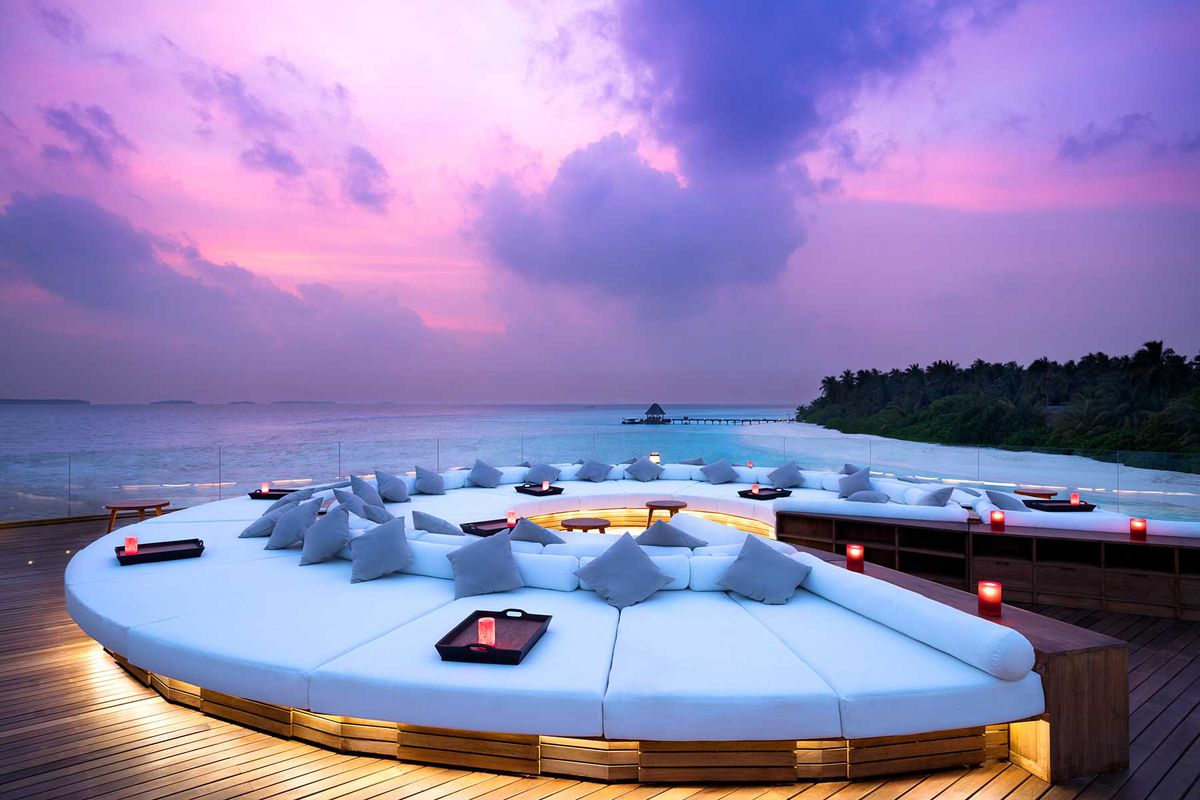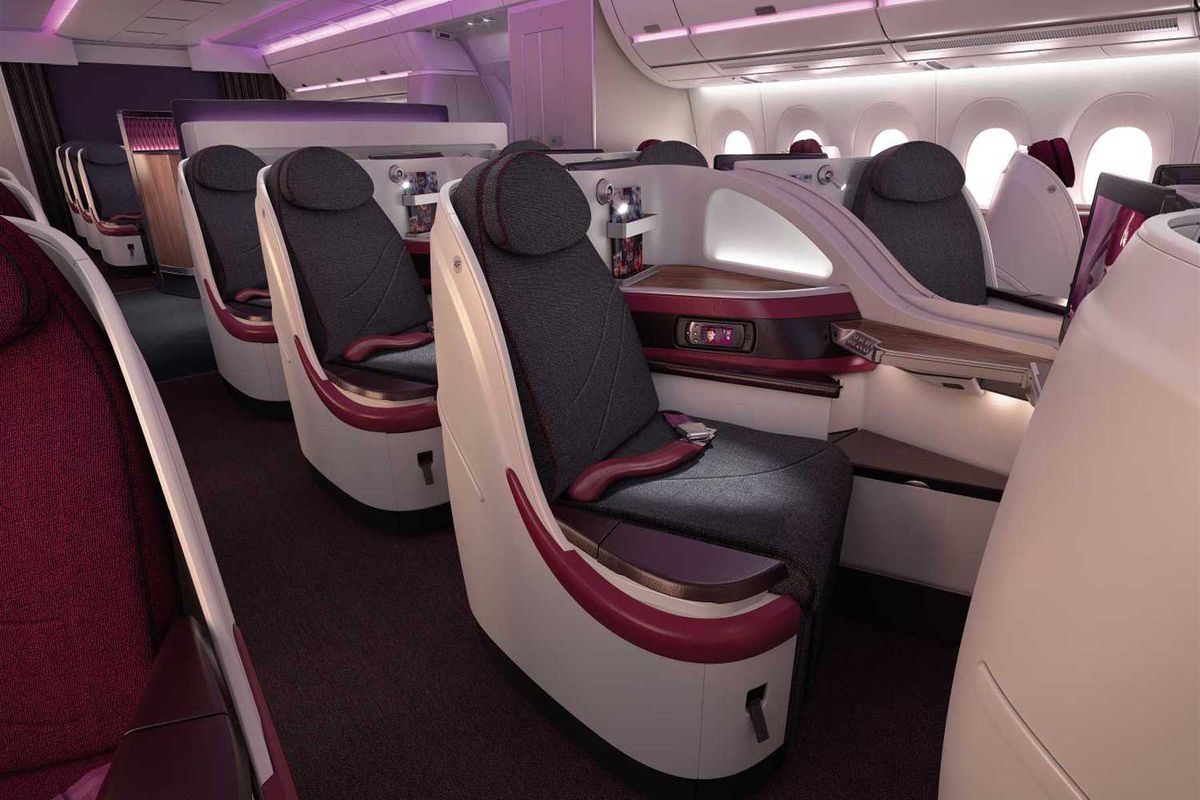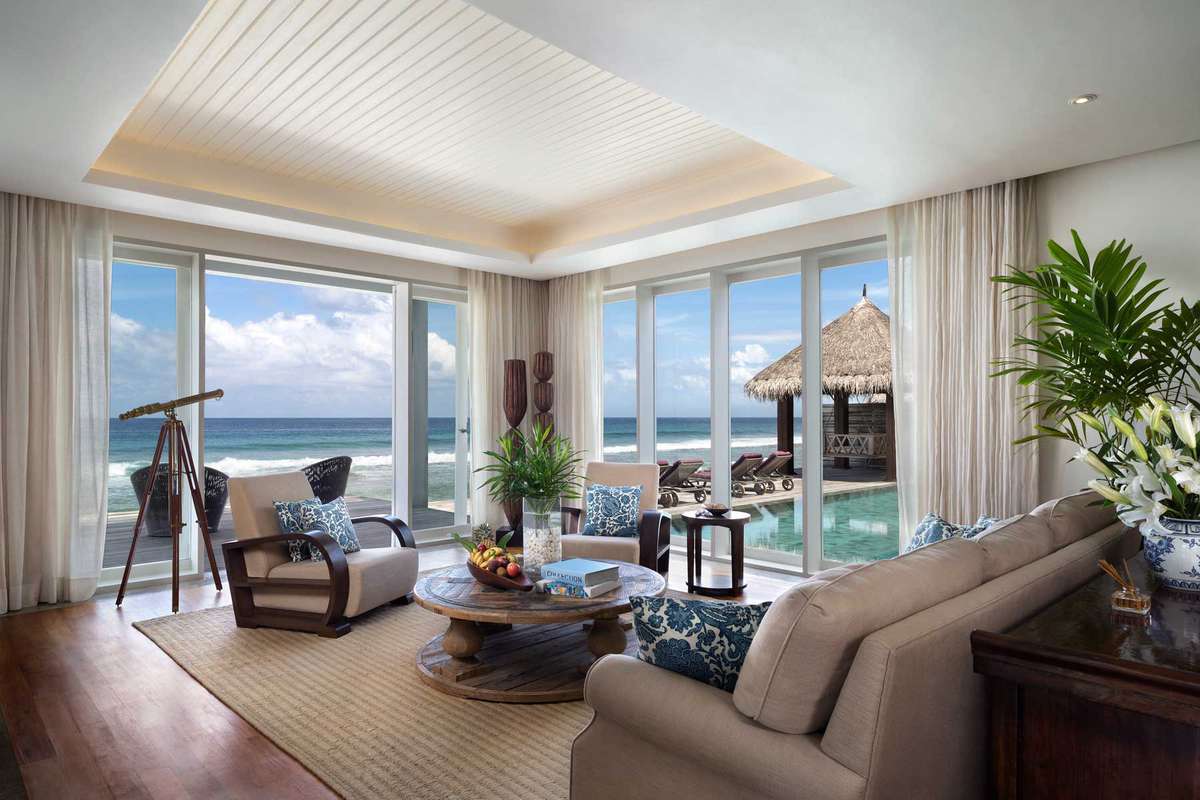I Traveled to the Maldives During COVID-19 — Here's What It Was Really Like
As a couple with plans to marry in 2020, my husband and I were some of the lucky ones. We always intended to have a small, private wedding, so while the pandemic upended many celebrations, our plans didn't change much at all. But as a travel writer, I dreamed more about my honeymoon than my wedding reception — and that's where things went awry. We had initially decided to sail to Antarctica, but with cruising halted for the foreseeable future, that trip became an impossibility. "No problem," we thought. "We'll go later!"
However, as we entered 2021, the future began to look less bleak with the arrival of vaccines and decreasing case counts in many destinations. We then realized that some of the more traditional honeymoon locations, namely tropical destinations, were perfectly suited for a trip now, given their focus on privacy and open-air facilities. I'll admit, my cabin fever and investigative urges got the best of me, and my husband and I booked a honeymoon. However, we pulled a complete 180 from our original plans, trading icebergs and penguins in Antarctica for sea turtles and beaches in the Maldives.
Pre-departure Precautions
Understandably, traveling during the pandemic is a contentious topic — there is risk involved no matter how many precautions you take. So, we decided to go above and beyond government requirements and guidelines to ensure our safety and the safety of those around us.
Before departure, my husband and I stayed in our apartment for two weeks, which is the estimated maximum incubation period for the virus. Our logic: If we had contracted COVID-19 prior to our quarantine, the virus would've had time to incubate, meaning it'd likely show up in our pre-flight PCR test. While the Maldives only requires a negative PCR test taken within 96 hours of departure, we were tested the day before our flight — and we were negative. The final step for our pre-travel process was to fill out an online health form for entry into the country, which must be submitted within 24 hours before departure.
Flying Around the World
The Maldives is one of the few destinations that currently has substantial airlift, with several major airlines operating daily flights. We booked tickets with Qatar Airways, a personal favorite airline, as I knew it would provide full meal service on our long-haul flight (unlike some American carriers flying domestic routes back at home). Given that the journey would take nearly an entire day each way, it was crucial to have those meals.
Upon check-in at our home airport, JFK in New York, we submitted quite a bit of paperwork for a Qatar agent to review before we were issued our boarding passes. We had printed our negative test results, a QR code we received after completing the Maldivian health form, and our hotel confirmations, all of which were checked. (I recommend printing multiple copies of each, just in case the airline needs to keep any for its records.)
On our first, 12-hour leg from New York to Doha, my husband and I flew economy on an Airbus A350, and we practically had the entire cabin to ourselves. Passengers were so few that everyone could take a full row — meaning all nine seats and two aisles, from window to window — and still leave empty ones in between. You couldn't ask for any better social distancing. And given the number of empty seats, the ratio of passengers to flight attendants felt as if it were 2:1. The cabin crew was incredibly attentive and quick with service, which, in our case, included two meals (that we were awake for, anyway) plus a special dessert for our honeymoon, compliments of our flight attendant. Masks, of course, were necessary throughout the entire flight, but we didn't have to wear face shields, a previous requirement on Qatar.
We spent our layover in Doha at Qatar's Al Mourjan lounge, a 100,000-square-foot space with two restaurants, various seating areas, showers, and even a nap room (all of which were open for use), before boarding our packed second flight to Malé, the capital city of the Maldives.
While the economy cabin might have been full to the brim, we flew in Qatar's Qsuites, the airline's top-tier business-class product, where lie-flat seats are nestled into private cubicles with sliding doors — a prime setup for social distancing. Arranged in a 1-2-1 pattern on our Boeing 777, the center Qsuites can actually be combined into a double or even a quad arrangement. As a honeymooning couple, we selected two center seats where the partition between them could be lowered to make a double bed, complete with a mattress pad and duvet. As the flight was quite short — just under four hours — we skipped the full meal to sleep, and it was heavenly.
On the Ground in the Maldives
Entering the Maldives was astonishingly easy. As we queued up before passport control, our temperatures were taken, and our bags were scanned. At the desk, I was prepared to show our negative test results, but the agent didn't ask for them — the online health form had all the necessary information, and that data was linked to our passports.
For our week-long stay in the Maldives, we split our time between two properties: Naladhu Private Island in South Male Atoll and Anantara Kihavah Maldives Villas in Baa Atoll. Naladhu was a short, 40-minute speedboat ride from the airport in Malé. A hotel representative met us at baggage claim, escorted us to the lounge for registration, then brought us to our luxurious (and air-conditioned) vessel, where we were the only passengers.
As we disembarked our speedboat to a musical welcome from staff at Naladhu, we heard some rather unexpected news: Guests were not required to wear masks on the property (though employees were), since everyone had tested negative before arrival. Naladhu, a private island of just 20 villas, is almost entirely outdoors, save for the guest accommodations and gym, so social distancing is easy to maintain — we were never within 15 feet of other guests. Additionally, the staff was in the process of being vaccinated during our stay, which is positive news for the Maldives tourism industry at large. Still, it's a good idea to wear a mask.
Our three days at Naladhu were utterly blissful. Compared to many of the bigger resort islands, which are loaded up with restaurants, bars, and activity centers, Naladhu has more of a quiet Robinson Crusoe vibe. That is, if Crusoe had a luxurious oceanfront villa with air-conditioning, Wi-Fi, and a private plunge pool, plus a housemaster reachable by WhatsApp 24/7 to attend to any needs. Okay, so maybe it's not quite like a desert island, though it's clear that the guests on Naladhu are here to disconnect and relax. We spent our days lounging, doing nothing but reading and looking at the sea (or the sharks, fish, birds, and crabs that passed by our private deck).
Time melted away here, and we hardly checked our phones or watches. We often opted for in-villa dining — our housemaster, Aslam, entered from a side door, bringing our meals to our outdoor dining table and slipping away unnoticed. If you didn't want to interact with anyone during your stay, you didn't have to. On other occasions, we dined at The Living Room, the island's only outdoor restaurant and lounge, where going barefoot is an acceptable option. We also enjoyed a romantic sunset dinner on the beach — this was our honeymoon, after all. And while we didn't take much advantage of this offering, guests at Naladhu also have access to two sister resorts just across the lagoon, where there are plenty more restaurants. But as the staff informed us, most Naladhu guests, like us, are more than content to stay put.
Our second hotel, Anantara Kihavah, was a 45-minute scenic seaplane ride from Malé. (This property also didn't require guests to wear masks.) With 80 villas, several restaurants and bars, an overwater spa, two boutiques, and a dive center, it's a mid-size resort island with far more activities than Naladhu. As such, it has a totally different atmosphere — one that's a little edgier and chicer, with a mix of modern and traditional architecture and design.
Here, we stayed in a picture-perfect overwater villa with a private plunge pool, which was attended to by a host who doubled as our electric cart chauffeur when we didn't feel like riding our provided bikes around the island. While we found our time in our villa to be relaxing, there was simply so much to see and do at Anantara Kihavah. We snorkeled the lively house reef, indulged in treatments at the spa, and dined at the various open-air restaurants, including the teppanyaki grill Fire, where our entertaining chef put on quite a show. The dining highlight for us, however, was the single indoor eatery: Sea, the underwater wine cellar and restaurant perched seemingly precariously on the edge of the fish-filled reef, nearly 20 feet beneath the waves.
My favorite activity at Anantara Kihavah was unique to the island resort. Above the Sky bar is the Maldives' only overwater observatory, which houses the region's largest telescope. As a space geek, I was thrilled to have a private honeymoon stargazing session with the resort's resident Sky Guru, Shameem, who regaled us with all the scientific facts he's learned through his years of study with astronomy legends around the world, including astronaut Buzz Aldrin. Afterward, we were gifted with the opportunity to officially name a star — a special perk of the honeymoon session.
Returning Home
The U.S. currently has a travel restriction in place that mandates all passengers flying to the country to have a negative COVID-19 result from a test taken within three days before departure. Both Anantara Kihavah and Naladhu had on-site doctors to administer the test — our results were returned within 24 hours, both in digital and printed form. (Be sure to ask for two copies.) Our villa host also kindly reminded us to fill out the Maldives' health form again, this time for departure.
Back at the airport in Malé, check-in was a bit more chaotic than it was on the U.S. side. First, we were required to show our QR code from the health form to airport security. Then, for Qatar, we had to fill out a passenger consent form on-site in the crowded departures hall, and present it with our printed COVID-19 test results to the check-in agent. Many passengers didn't have the form filled out in advance, nor did they have printed copies of their test results, causing a traffic jam of confused travelers. Fortunately, once the check-in agent received all our appropriate paperwork, we were able to head to the simple lounge to await our flight to Doha.
Much like last time, we flew in Qatar's Qsuites for this short leg — and similar to our journey from the U.S., we didn't spend much time eating or drinking. But we changed things up for our 14-hour red-eye flight home to New York, leaving economy behind for the spacious double bed in the Qsuite. (There's a desk at the airport in Doha where you can buy upgrades if they're available — they're often more affordable than the full business-class price listed online at the time of booking.)
On Qatar's long-haul routes, Qsuite passengers are treated to anytime dining, so you're free to eat or sleep whenever you'd like to suit your jet-lag schedule. I started with my favorite snack — the afternoon tea served with finger sandwiches, scones with clotted cream, and French pastries (and in my case, rosé Champagne) — then had a lobster dinner and shakshuka for breakfast. In between those meals, my husband and I both got a full night's sleep — what more could you ask for on a red-eye?
Arrival back in the U.S. was pretty much the same as the pre-pandemic era, save for the New York-specific health questionnaire that passengers flying to the state must fill out before leaving the airport. Otherwise, no one checked our COVID-19 test results, though we did have our spare copies on hand. In keeping with the CDC guidelines, we're now quarantining at home for seven days, with the exception of taking a test on our fourth day. Even if we test negative, we'll finish out the full quarantine, just to be safe.
The Bottom Line
As the vaccines continue to roll out and the world slowly reopens, you might be starting to think about travel again — especially to destinations reliant on tourism, such as the Maldives, where the industry counts for 28% of the GDP. But travelers mustn't be reckless as they return to the road, particularly as every destination will be at a different point in its recovery. If you decide to travel in the near future, it's crucial that you adhere to all guidelines issued by governing bodies, from testing to quarantining, to ensure everyone's safety.
Source: Read Full Article






